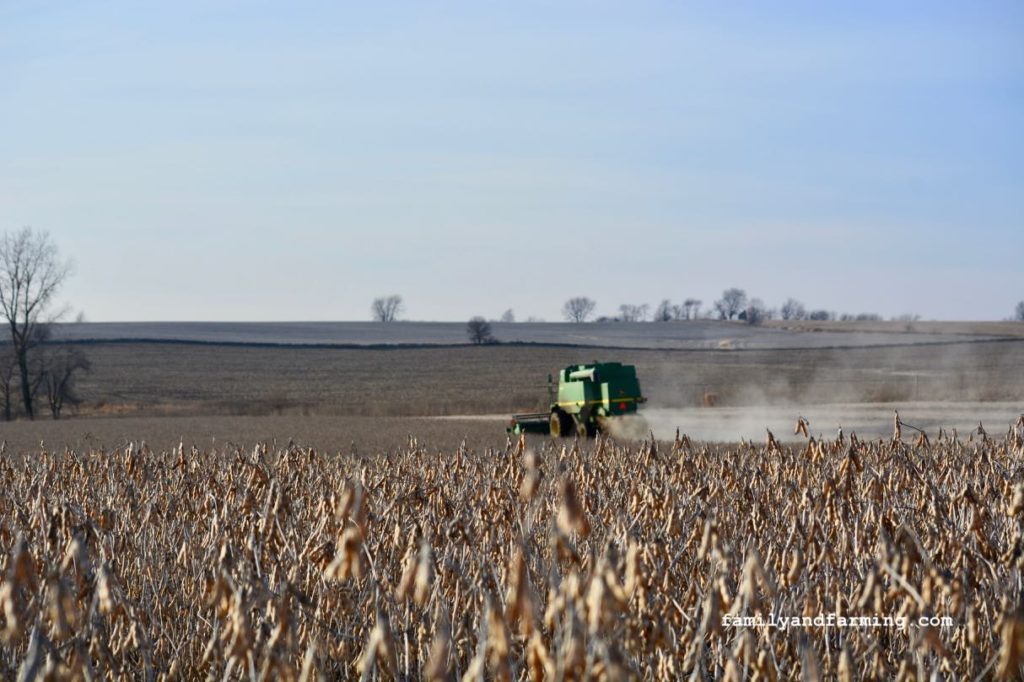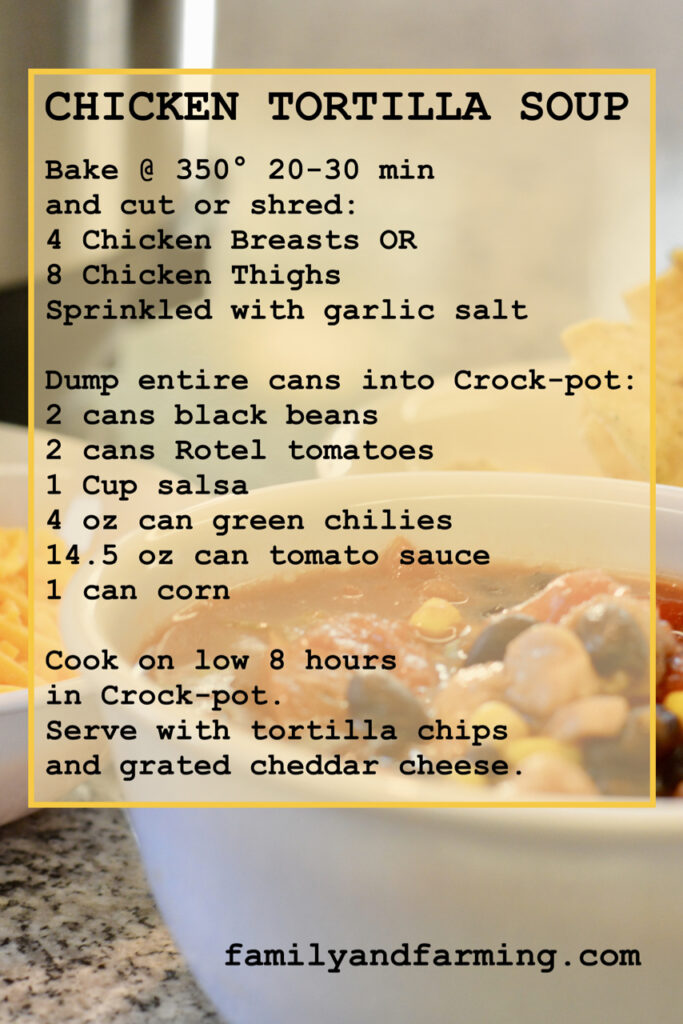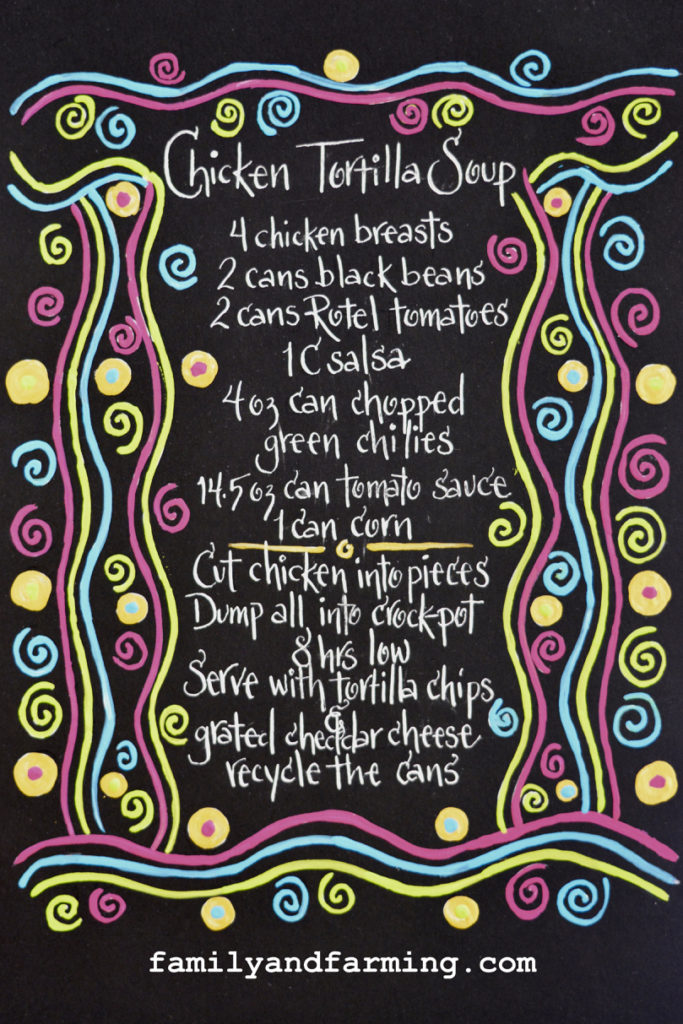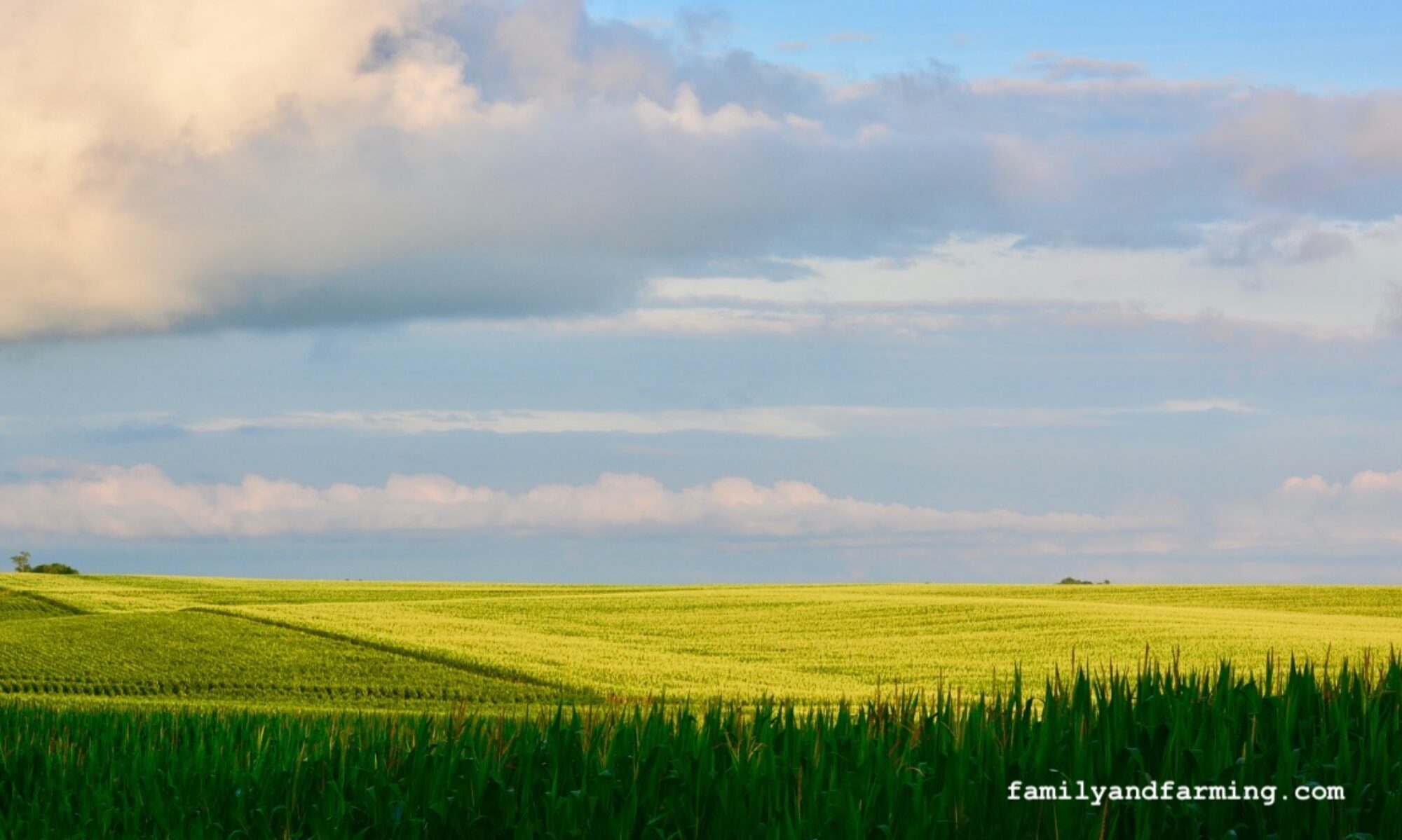This year’s growing and harvest season have been white-knuckle. If you remember, the planting season was difficult, the growing season was difficult, and the harvest season was difficult.
Harvesting Soybeans in the Winter
Planting should have been done in May, but wasn’t done until the first week of June, and then it rained and rained and rained. Harvest should start in September and complete in November. This year, the harvest didn’t start until October and it snowed 6 inches on Halloween. And then it rained. And then it snowed. What can we do? Hang on. White-knuckles. The corn isn’t really dry, but the beans aren’t good at all. The beans were the last crop planted, and have to be the last crop taken out. The typical complete growing season for beans is around 100 days and the weather is moving toward winter.
Then the unthinkable happens. After the corn is finally taken out, bit by bit, a bearing goes out in the combine, and the repair takes two days. And then it snows and rains again. White-knuckles.
A Difficult Soybean Harvest
Sixty acres of beans sit out in a soggy field. Snow, rain, snow, rain. White-knuckles. Payments are due. White-knuckles. You can’t harvest beans in a wet field, as the combine and wagons can get stuck. You can’t combine beans that are wet, as the beans are hard to shell from the pod and bean straw won’t run through the machine. There is dampness in the field and plants, which makes everything in the bean harvesting process impossible.
A Weather Break
And then there’s a break in the weather at the end of December! The sun shines and the wind blows and temperatures make a 30-40 degree upward swing. A window of opportunity! Unclench your hands and do as they say on the farm, “Make hay while the sun shines!” Or in this case, it’s “Harvest beans before the snow flies!”

Combining beans can only be done after frost has left the field. The combine is fired up after 11 a.m. and runs until dark, before frost begins to seep back into the fields, which in December is around 5-6 p.m. White-knuckles. Sixty acres done in four afternoons. Merry Christmas!
A job that should be done in October is done at the end of December. There is a sigh of relief! Four days later there is a heavy rain of almost 2 inches followed by snow and 40 MPH winds to end 2019. Happy New Year?
Unclench and breathe.
Be Blessed!
Easy Chicken Tortilla Soup
 Here’s a recipe that will cause you very little stress! Chicken Tortilla Soup will become a family favorite. The kitchen tool you’ll use the most will be a can opener! If you really want to “can it up”, you could use canned chicken in place of chicken breasts. It’s really up to you.
Here’s a recipe that will cause you very little stress! Chicken Tortilla Soup will become a family favorite. The kitchen tool you’ll use the most will be a can opener! If you really want to “can it up”, you could use canned chicken in place of chicken breasts. It’s really up to you.
I like to bake my chicken sprinkled with garlic salt at 350 degrees for 20-30 minutes and then cut the chicken up before dumping everything into a Crock-pot for 8 hours on low.
Recycle the cans and be sure to have lots of tortilla chips and shredded cheese out when serving.
Chicken Tortilla Soup
Tools You’ll Need:
- Can opener
- Crock-Pot
- Kitchen scissors, knife, or 2 forks to shred chicken
Ingredients:
- 4 chicken breasts
- 2 cans black beans
- 2 cans Rotel tomatoes
- 1 C salsa
- 4 oz can green chilies
- 14.5 oz can tomato sauce
- 1 can corn (don’t drain)
Directions:
Bake chicken breasts sprinkled with garlic salt in a 350 oven for 20-30 minutes. Cut or shred the chicken into pieces. Get out the can opener and open all of the cans and dump everything into a Crock-pot. Stir once. Cook on low for 8 hours. Serve with tortilla chips and grated cheddar cheese.

Discover more from Family and Farming
Subscribe to get the latest posts sent to your email.


Love your information and will try the soup for sure. So glad you got your crop out!
Thank you so much for the nice comment! Try this soup! It is sure to become a favorite!
Thankfully you got your harvesting done!
We are so thankful to be done! Thank you for the kind thoughts!